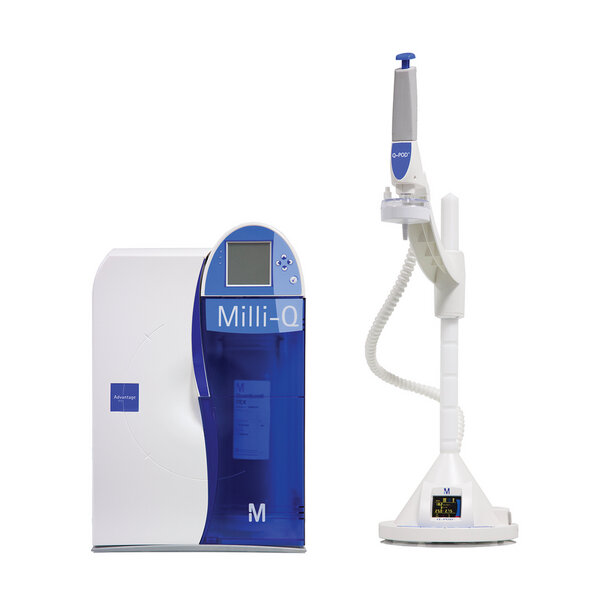Sterile RO/MilliQ Water
Image source; https://www.labrepco.com/product/milli-qa-reference-water-purification-system/
I’ve never needed water this fancy, RO is fine!
What are they and why do we use them? What types are there?
A water purification system is a critical piece of infrastructure for any synthetic biology lab. You will need trustworthy, purified water every single day. If your water purification system breaks, or starts acting up - it can throw absolutely everything into disarray. Let’s start with the types of pure water…
Reverse Osmosis (RO) - A machine for RO purification uses a pressure difference across a membrane to force all the ions out of water, reversing the process of osmosis.
MilliQ - A machine specific to the Millipore Corporation that is considered an international standard. Resin filters purify the water, the electrical resistance of which is monitored to ensure purity. The water drizzles through a 0.22 μm filter, which is small enough to catch viruses.
I’m on the side of the debate which says that Reverse Osmosis is practically identical to MilliQ and would recommend you choose whichever system you can get for the cheapest. This is hotly contested in some circles, if I ever see compelling evidence that there is a difference - I’ll come back to update this section.
Even a filter fine enough to catch viruses will still miss some proteins, so it is important to denature any proteins that may linger in your water source. This means using an Autoclave to sterilise your water. You should be autoclaving any bottles of water that you plan to use in your synthetic biology protocols - with the exception of some of the buffer mixing. Some buffers are so toxic that life doesn’t even try to live there.
When do you use?
Water is used in practically every protocol. It is the medium of biological life as we know it. This page is probably linked on every protocol on the site.
Anywhere you see the term “sterile" or “autoclaved” before the ingredients/consumables in a protocol - assume the water needs to have been sterilised in an autoclave.
How do you use?
Dispensing the water will be machine specific - it generally involves pressing some buttons. Find the machine make and model - google for the manual and read it!
Dispense water into the vessels you wish filled. Seal the lid tightly, then loosen by half a turn. Loading tightly sealed vessels into an autoclave = explosion. Attach autoclave tape if you have it.
Ideally you should always have a large stock of sealed glass bottles containing water that you’ve already sterilised. I like to keep a 2L bottle, 1L bottle, a few 100mL bottles and about 100 x 5mL bottles of sterile RO water in my cupboard.
When you start to run low, set a day for dispensing and autoclaving the water. Or get an intern to do it. Interns love autoclaving water. I should know. I was that intern.

